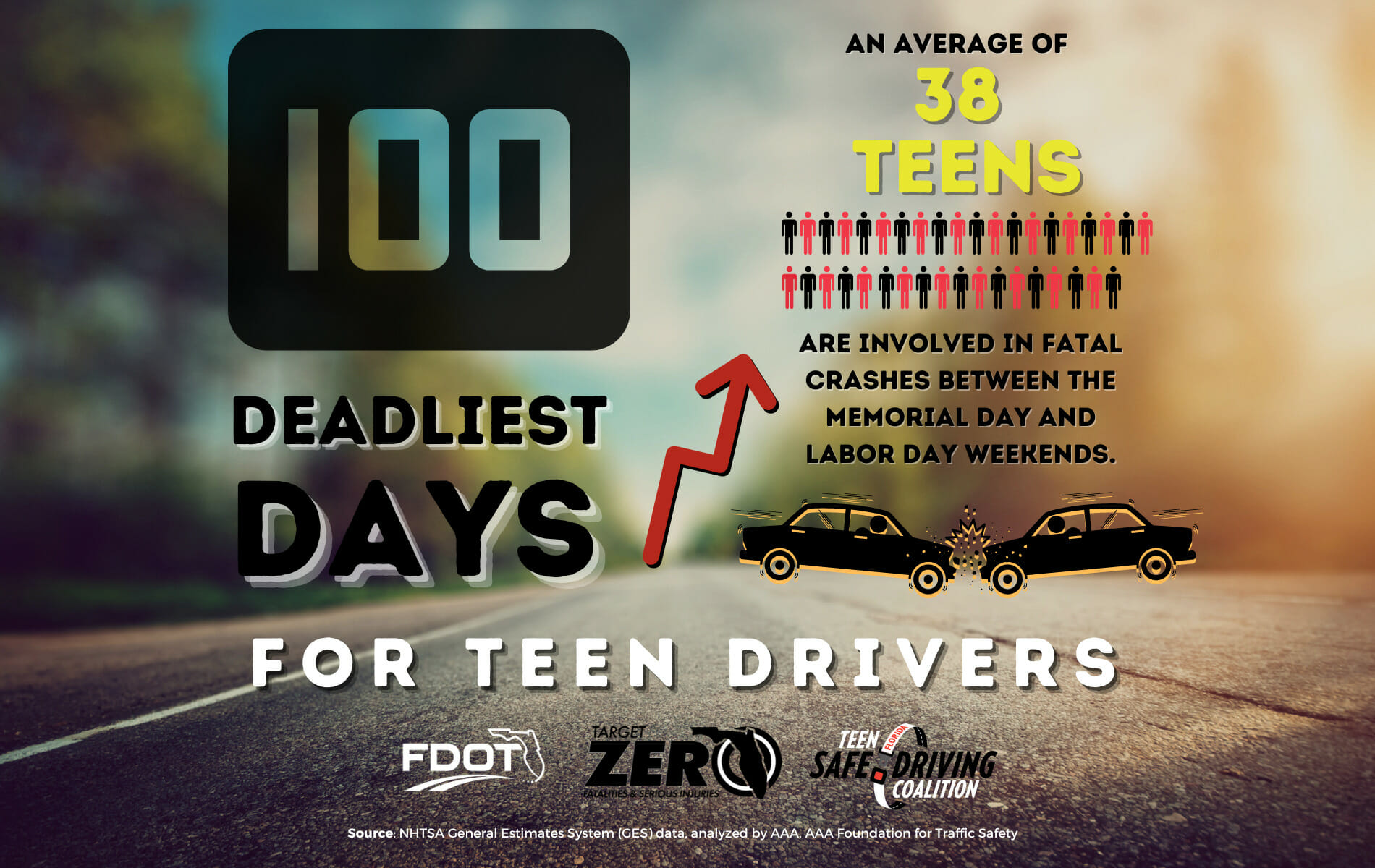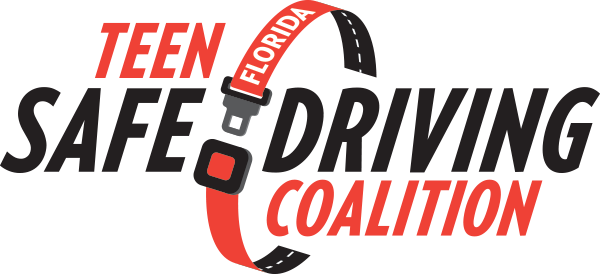
100 Deadliest Days for Teen Drivers
We’re entering the most dangerous time of year for teen drivers
The “100 Deadliest Days” is the period between Memorial Day and Labor Day when fatal teen crashes increase dramatically. Parents are the best line of defense to ensure a safe ride!
Teens drivers have a higher rate of fatal crashes, due to immaturity, lack of skills, and lack of experience. Teenagers speed, they make mistakes, they wear their safety belts less often, and they get distracted easily – especially if their friends are in the car.
What Can You Do?
- Talk to your teen about the rules and responsibilities involved in driving. Share some stories and statistics related to teen drivers and distracted driving. Remind your teen often that driving is a skill that requires the driver’s full attention. Texts and phone calls can wait until arriving at his or her destination.
- Familiarize yourself with Florida’s graduated driver licensing law, and enforce its guidelines for your teen. View Florida’s laws on distracted driving, create your own rules if necessary. Restricting the number of passengers your teen can have, or the hours your teen can drive, is a very effective way to minimize distraction for your teen driver. Talk about the consequences of distracted driving and make yourself and your teen aware of your state’s penalties for talking or texting on a phone while driving.
- Set consequences for distracted driving. If your teen breaks a distraction rule you’ve set, consider suspending your teen’s driving privileges, further limiting the hours during which they can drive, or limiting the places where they can drive. Parents could also consider limiting a teen’s access to their cell phone—a punishment that in today’s world could be seen by teens as a serious consequence.
- Set the example by keeping your eyes on the road and your hands on the wheel while driving. Be consistent between the message you tell your teen and your own driving behaviors. Novice teen drivers most often learn from watching their parents.
Teenage Driver Facts
- Nationally, teen drivers were involved in approximately 1,035,811 crashes resulting in 4,405 fatalities and 319,335 serious injuries in 2020[1]. Florida has more than 800,000 registered teen drivers, age 15 to 19. In Florida, teen drivers were involved in 84,052 crashes resulting in 350 fatalities and 1,935 serious injuries in 2020[2]. Nationally, drivers aged 16 and 17 have the highest crash rates of any age group, while in Florida, teens age 18 and 19 have the highest crash rates. Peer pressure is an especially potent contributing factor to crashes involving a teen driver.A recent National Highway Traffic Safety Administration (NHTSA) study found:
- Teens were two-and-a-half times more likely to engage in potentially risky behavior when driving with a teenage peer versus driving alone.
- The likelihood increased to three times when traveling with multiple passengers.
- Safety belts were not worn in one-third of the fatalities and serious injuries involving these teen drivers.
Teen drivers are inexperienced and therefore more likely to underestimate dangerous situations and allow shorter distances between vehicles. From 2016-2020, more than one third of all fatalities, serious injuries, and crashes involving a teen driver in Florida occurred at intersections where the mix of traffic, pedestrians, signs, and signals can be overwhelming, especially for someone who is inexperienced. The Graduated Driver Licensing (GDL) laws allow new drivers to gain necessary experience and skills before being allowed full driving privileges. GDL has been very effective in reducing fatalities and serious injuries among teen drivers in places where GDL laws are the most robust.
In 2020, travel behavior was heavily impacted by the COVID-19 pandemic, leading to historic lows in Florida’s vehicle miles traveled for portions of the year when most of the population limited their travel to only the essentials. This shift in travel behavior had a major impact on the number of fatalities, serious injuries, and crashes creating, in some cases, abrupt shifts from previous trends. Florida will continue to monitor these trends to determine if data reported in 2020 is an outlier or the beginning of a new trend in teen driver safety.
*Source: https://flteensafedriver.org/florida-teen-driver-fact-sheet-2022/

